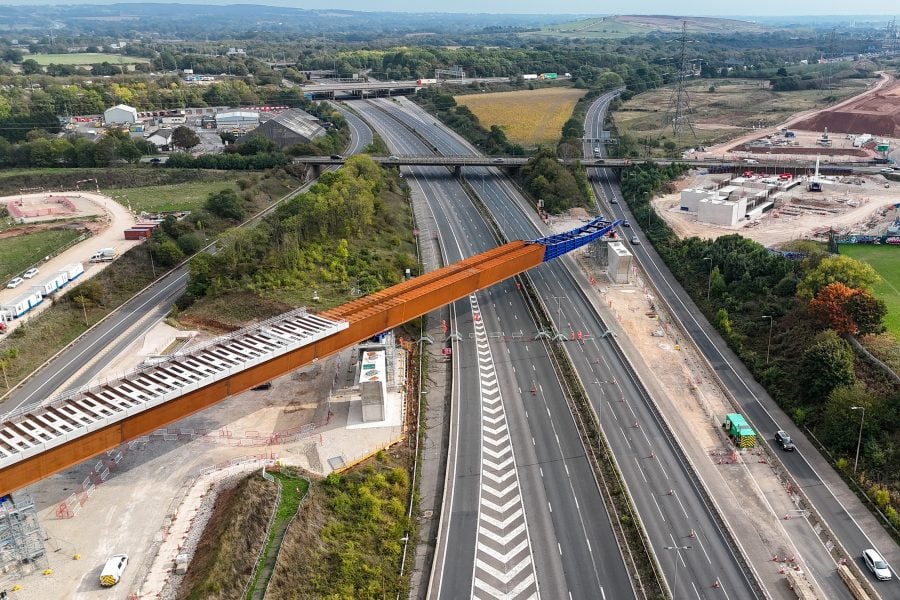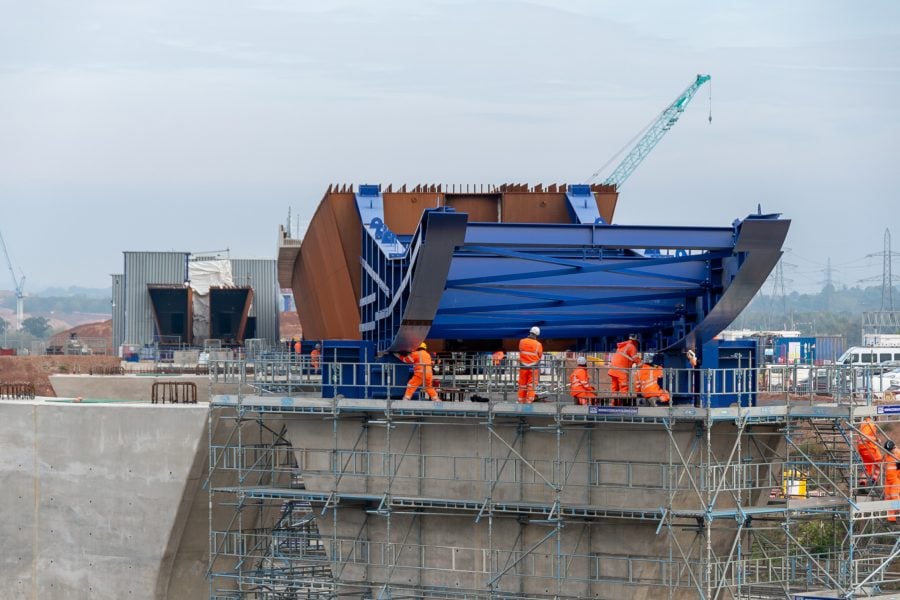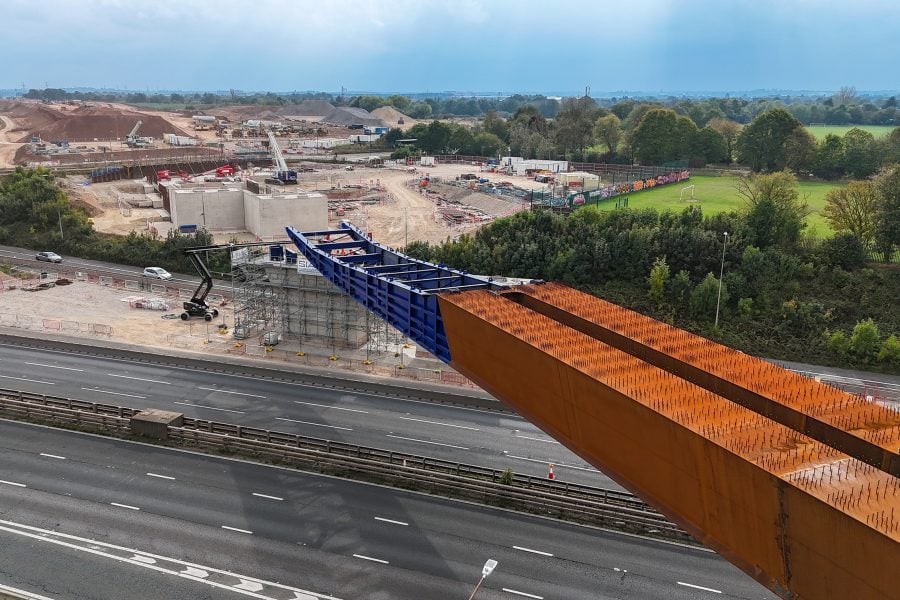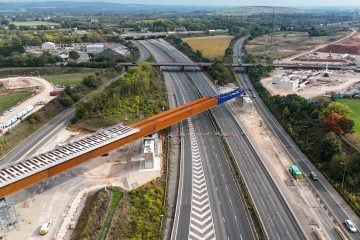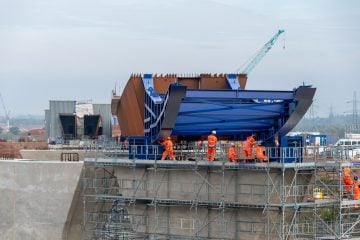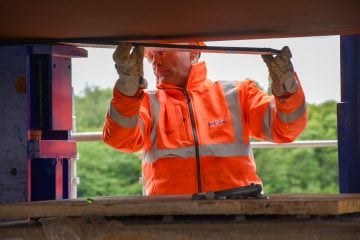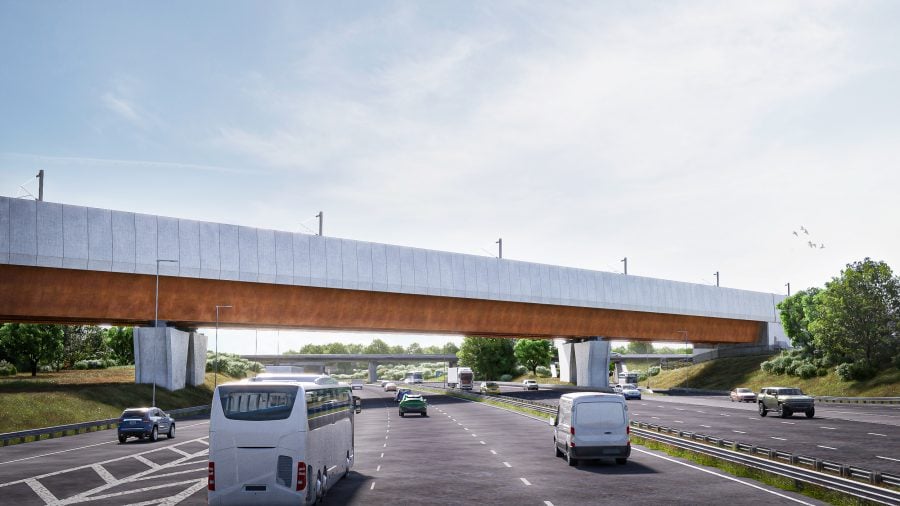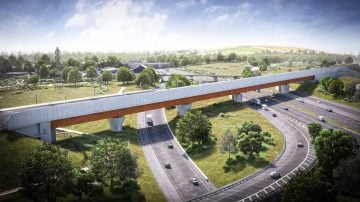
M6 South Viaduct
The twin 320-metre viaducts will ultimately carry HS2 trains over the M6. To reduce disruption for motorists, the viaducts are being assembled to one side and slid across the motorway over three weekends, with each part pushed out with the next section added behind it.
Viaduct construction
The first viaduct to be built was the ‘East Deck’, which will carry two HS2 tracks taking trains towards London. The first section – which stretches for 119m – was slid out over a slip road next the motorway.
This multi-stage process means that the weight of the deck will increase with each push from 1,300 tonnes this weekend, to 3,290 for the final slide. These subsequent slides will take the deck out over the main M6 carriageway and then finally the M6-M42 link roads.
The viaduct section was moved using a series of winches, known as strand jacks, sliding across non-stick pads to reduce friction – a material usually found to the surface of a household frying pan.
During the second ‘East Deck’ push, the team of engineers used a ‘fully restrained’ sliding technique before the closure of the motorway, allowing the viaduct to launch over the M6 Junction 4 slip road, while maintaining traffic on the carriageway below. This approach was introduced in collaboration with National Highways, to reduce the time of the operation and further minimise the impact on road users. In fact, both carriageways were opened to traffic 9.5 hours ahead of schedule.
An adjacent ‘West Deck’ will carry a further two tracks for services heading to Birmingham and further north.
Viaduct design
Each viaduct is formed of a hollow double-box structure made of weathering steel. The steel boasts a natural protective layer of oxidisation which gives it a characteristic ‘rusty’ appearance and reduces maintenance by eliminating the need for regular repainting.
Four pairs of concrete piers support the viaducts with the tallest one measuring 9.9m in height. A 4.5m high parapet will be installed on the side facing Chelmsley Wood to reduce noise and disturbance from passing trains.
